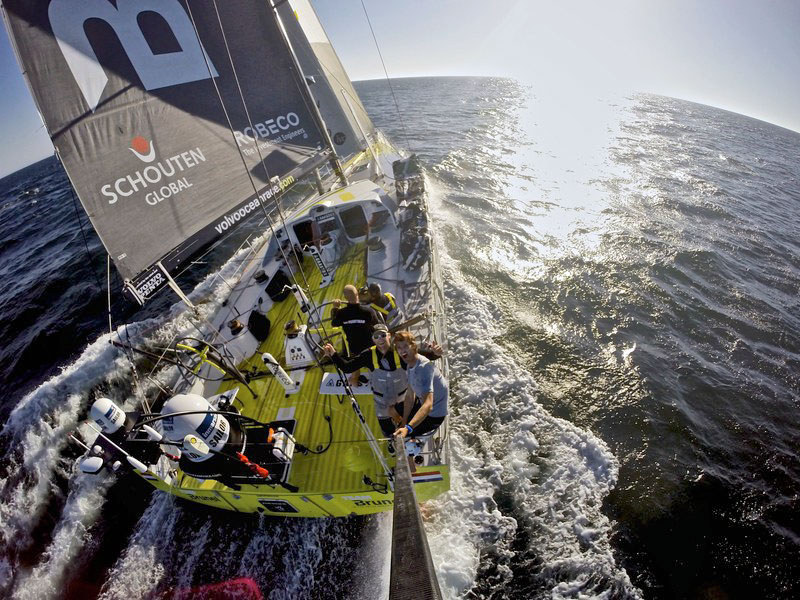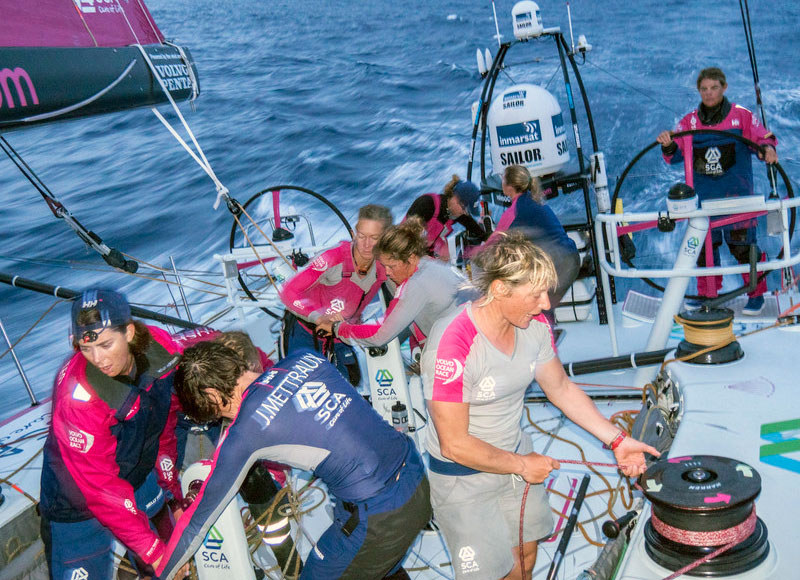
Volvo Ocean Race Catch-Up

The great thing about one-design racing is that the competition is tight – once you’re in the lead you know that no other boat is physically faster. The bad thing is that if you’re last in the pack your chance of catching up diminishes. This first leg of the Volvo Ocean Race from Alicante, Spain, to Cape Town, South Africa, has seen some tight racing, but now the boats are spread out, with the leaders in a 100-mile radius and the trailers searching for a passing lane 250 miles away as they approach the St. Helena High.
Just a few days ago, it looked as if the fleet might compress, but a lane of wind has split the High and offers the leaders a chance to head south to catch the prevailing westerlies. If some of the teams were thinking of going way south to avoid the St. Helena High altogether, that possibility has been eliminated, as race officials have set up an ‘ice gate’ in their path to keep them away from icebergs. This means more holes to avoid and tricky racing all the way to the finish at Cape Town.
Bouwe Bekking’s Team Brunel is the current leader, with the Spanish team MAPFRE and Swedish team SCA bringing up the rear.

For a nifty tracker that is easy to use see http://volodiaja.net/Tracking. And to watch the race videos, visit the VOR YouTube channel at: www.youtube.com/user/volvooceanracevideos/videos. We’ll have a comprehensive overview of the race in the Sightings section of the November Latitude 38, coming out on Friday.
